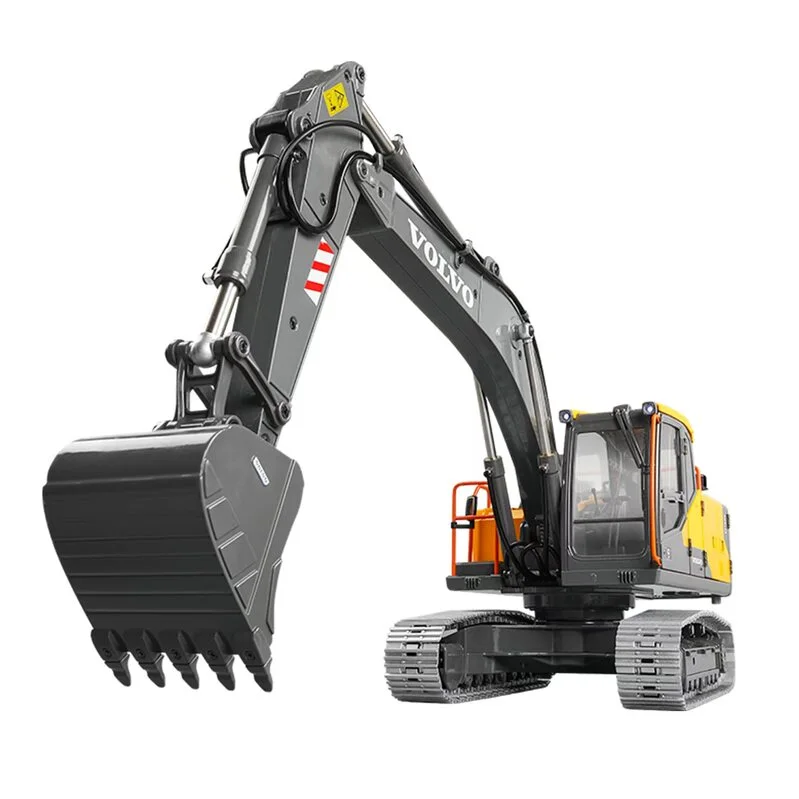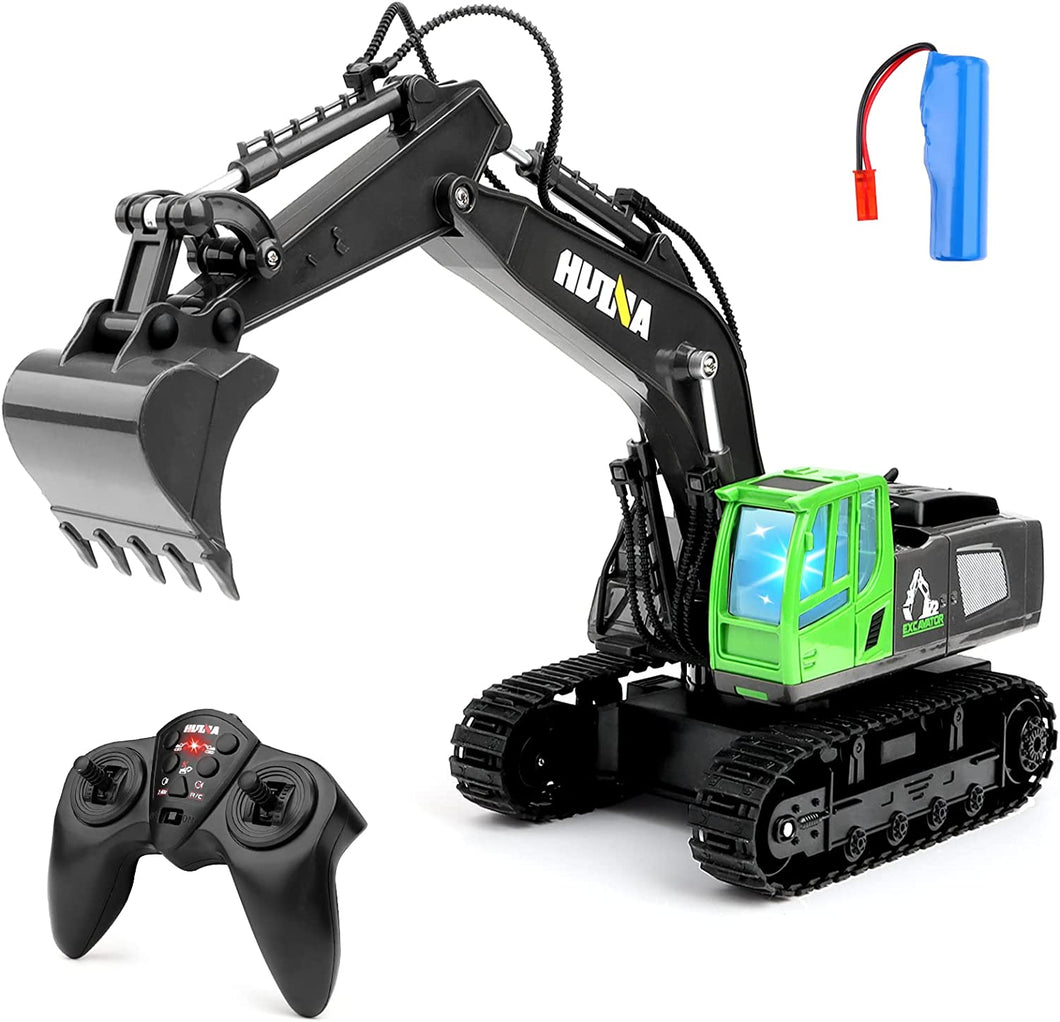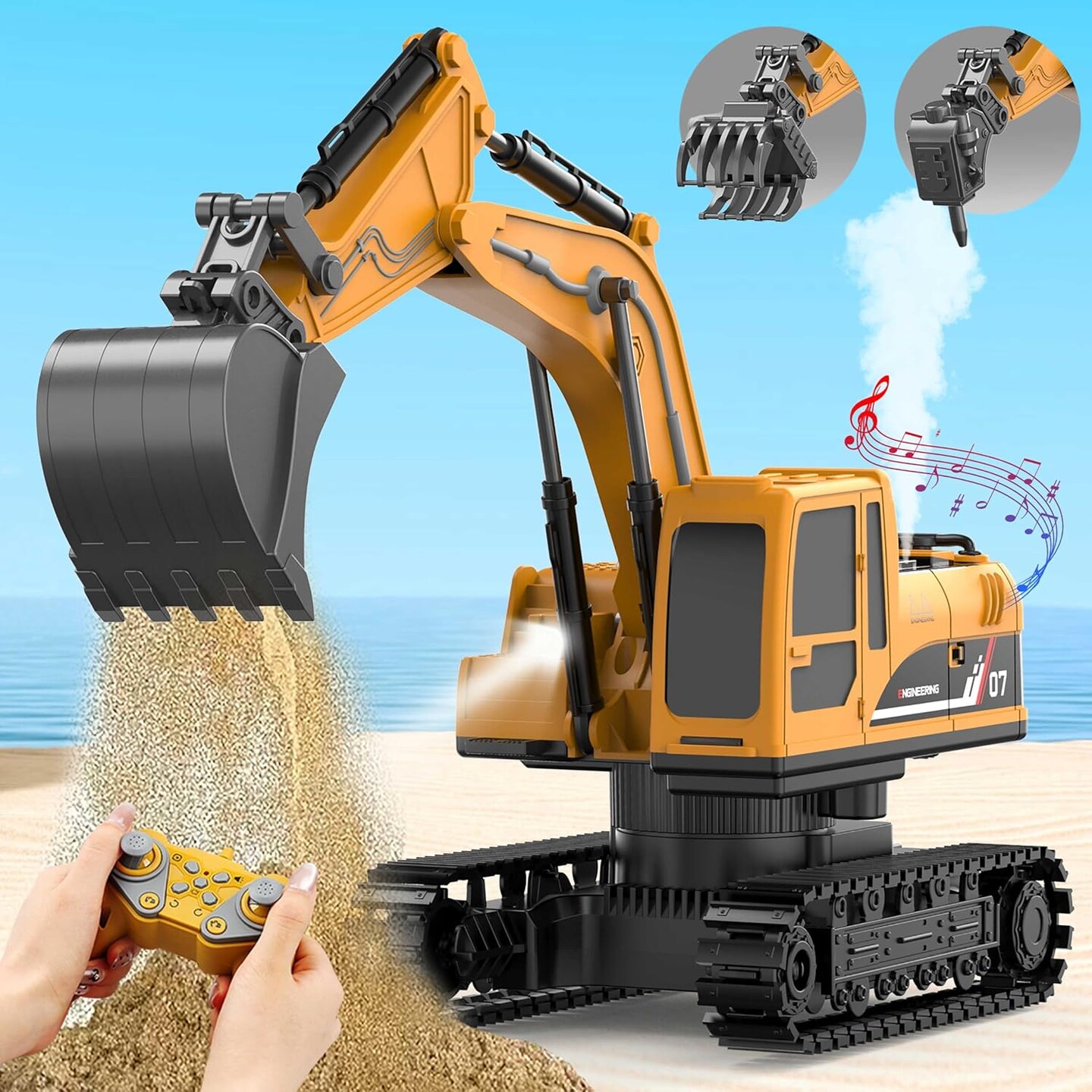The Vital Attributes of Excavator That Make It a Must-Have Device
Excavators are crucial in the building and construction and landscape design industries. Their functional add-ons permit for a variety of tasks, from digging to demolition. In addition, they flaunt superior excavating depth and reach, powered by robust engines. Operator comfort and small designs improve usability in numerous environments. Nevertheless, what genuinely sets excavators apart are their innovative hydraulic systems and resilience. Recognizing these attributes can make clear why they are considered crucial devices on any task website.
Functional Add-ons for Boosted Capability
Excavators are powerful equipments on their own, the addition of functional attachments greatly boosts their performance. These accessories change a conventional excavator into a multi-purpose device, appropriate for a selection of jobs. Pails, as an example, been available in different forms and dimensions, enabling operators to dig, scoop, and move products efficiently. Hydraulic thumbs can be included for improved gripping and handling of cumbersome products, such as logs or rocks.Furthermore, specialized attachments like augers and breakers permit drilling and demolition work, expanding the excavator's energy on building websites. remote control excavator. Grapples are one more alternative, ideal for relocating and arranging debris. This adaptability not just raises performance but likewise reduces the need for multiple makers, conserving time and prices. By furnishing excavators with the appropriate accessories, operators can take on diverse tasks, making them indispensable in the building and construction industry
Superior Excavating Depth and Get To
Excavators are developed with exceptional digging depth and reach, permitting them to steer in limited spaces and accessibility hard-to-reach areas. This ability is critical for different construction and excavation tasks, where typical equipment may drop brief. With flexible boom arms and extendable tracks, excavators can easily navigate irregular terrain while maintaining stability.The excavating depth can vary substantially among models, commonly varying from 10 to 25 feet, relying on the style and objective. This function enables operators to excavate structures, trenches, and other deep frameworks successfully. In addition, the reach of an excavator permits precise digging and product handling without rearranging the maker regularly, conserving time and labor costs.Ultimately, the exceptional digging depth and reach of excavators make them important for experts seeking to complete complicated jobs with precision and efficiency. Their convenience enhances productivity on work sites, showcasing them as a vital tool in contemporary construction.
Powerful Engine Performance

Effective engine performance plays a critical function in the capacities of an excavator when it comes to efficiency and productivity on construction sites. A durable engine creates considerable horsepower, permitting the machine to deal with sturdy tasks with ease - remote control excavator. This strength converts into faster cycle times, making it possible for operators to total jobs much more quickly.Additionally, effective engines provide the essential torque to take care of challenging terrains and varied lots, making certain that the excavator can do successfully under different problems. Whether it is lifting, digging, or relocating products, the engine's efficiency directly influences the total operational performance of the machine.Furthermore, developments in engine technology have actually led to enhanced fuel effectiveness, lowering functional costs while preserving power result. Ultimately, the engine's efficiency works as the foundation of an excavator, affirming its status as a crucial device in the building and construction industry
Advanced Hydraulic Solutions

Enhanced Raising Capability
A substantial enhancement in raising capability can be credited to advanced hydraulic systems discovered in contemporary excavators. These systems make use of high-pressure liquid to create higher force, allowing operators to lift much heavier loads effortlessly. The design behind these hydraulics guarantees peak efficiency, supplying an impressive power-to-weight proportion that boosts general effectiveness. Therefore, excavators can tackle demanding tasks, such as lifting large materials or tools, without jeopardizing security. Furthermore, the robust layout of hydraulic parts adds to boosted longevity and integrity, making them appropriate for numerous construction settings. This enhanced training ability not just lowers the time needed for projects yet likewise lessens the requirement for extra equipment, proving necessary for both performance and cost-effectiveness in the building sector.
Boosted Precision Control
Although standard excavators typically battled with accuracy, modern-day hydraulic systems have actually changed control mechanisms, enabling operators to carry out tasks with remarkable precision. These sophisticated systems make use of symmetrical control valves that enable smoother and much more responsive movements, significantly reducing the margin for error. Operators can now finely tune the excavator's movements, making it easier to browse limited areas and take care of delicate materials. Boosted comments systems additionally notify drivers of real-time performance, making sure suitable sychronisation in between the device and operator. This increased precision not only improves efficiency however also enhances security on task sites, minimizing the risk of mishaps. Therefore, modern excavators furnished with sophisticated hydraulic systems are indispensable devices for building and construction and excavation projects calling for careful accuracy.
Driver Comfort and Exposure
Driver convenience and exposure are critical parts in the layout of modern excavators (remote control excavator). Features such as ergonomic seat layout, boosted presence alternatives, and reliable control formats significantly enhance the operator's experience and performance. Prioritizing these elements assurances that operators can function properly and securely in various problems
Ergonomic Seat Design
Convenience and exposure are critical in excavator style, with the ergonomic seat playing a vital function in enhancing the operator's experience. An ergonomic seat is crafted to support the operator's body, reducing exhaustion during long hours of operation. Flexible functions, such as seat elevation, backrest angle, and lumbar support, cater to specific choices and promote optimal position. These modifications enhance convenience and my response enable the operator to preserve focus on jobs without pain. In addition, a properly designed seat can provide better side assistance, permitting smoother maneuvering when the excavator is in operation. This thoughtful design not only boosts productivity yet also adds to overall safety and security, guaranteeing that drivers can execute their obligations efficiently and effectively.
Enhanced Exposure Features
The layout of an excavator extends beyond just the seat, with improved visibility functions playing a considerable duty in operator comfort and general security. Large windows and tactically positioned mirrors supply drivers with a clear view of their surroundings, minimizing unseen areas. This layout factor to consider permits far better spatial awareness, which is vital in busy job atmospheres. Additionally, many excavators include rearview video cameras and advanced tracking systems that aid operators in navigating limited spaces. The combination of these exposure features not just promotes security but likewise decreases driver exhaustion by allowing simpler monitoring of work locations. Eventually, improved exposure adds to a lot more efficient operations and assists assure that excavators can do their tasks properly and securely.
Control Format Effectiveness
While maneuvering complex job sites, an efficient control design considerably enhances both operator comfort and exposure. A properly designed control setup guarantees that drivers can access crucial functions with marginal effort, minimizing fatigue throughout lengthy hours. Ergonomic joystick placements and intuitive switch plans permit smooth procedure, allowing drivers to maintain emphasis on the task handy. Furthermore, clear exposure of both the workspace and the control panel is essential for safety and precision. Modern excavators frequently incorporate adjustable seating and control settings to accommodate various driver preferences, additionally improving convenience. Eventually, a thoughtfully created control design not only enhances productivity but additionally fosters a safer working atmosphere by allowing operators to respond quickly to altering problems.
Compact Style for Urban Environments
As metropolitan construction websites typically face area restraints, a portable layout becomes crucial for excavators operating in these settings. These machines are engineered to navigate limited areas, enabling effective ability to move in crowded work websites. A Full Article decreased footprint allows them to function closely to existing frameworks, reducing interruption and optimizing productivity.The small style typically consists of much shorter tracks and a tighter transforming span, promoting procedure in narrow alleys and confined locations. Light-weight products contribute to ease of transport, making it less complex to move the excavator from one area to another within the city landscape.Additionally, several portable excavators are geared up with attributes such as extendable arms and versatile accessories, boosting their capability while keeping a tiny size. This versatility allows drivers to take on a variety of jobs, from digging to demolition, all while suitable flawlessly right into the constraints of urban settings.

Resilience and Upkeep Considerations
Durability stands as a vital aspect in the performance and long life of excavators, especially sought after city atmospheres. These machines go through strenuous problems, consisting of differing soil types, severe temperatures, and high-frequency usage. High-grade materials and durable building are needed for guaranteeing that excavators can hold up against these challenges without jeopardizing functionality.Regular maintenance is just as essential in protecting durability. Set up examinations, timely oil adjustments, and the replacement of worn components add substantially to an excavator's life-span. Operators has to additionally focus on hydraulic systems, tracks, and undercarriages, as these parts typically bear the brunt of wear and tear.Investing in resilient excavators with comprehensive upkeep strategies improves reliability and minimizes downtime, ultimately resulting in enhanced efficiency on building and construction sites. Comprehending the interplay between durability and upkeep is necessary for anybody thinking about the acquisition of an excavator for metropolitan projects.
Often Asked Inquiries
Exactly How Do Excavators Compare to Various Other Building And Construction Tools?
Excavators stand out amongst building devices as a result of their versatility, making it possible for jobs such as training, grading, and excavating. Compared to others, their hydraulic capacities offer higher efficiency and power, making them vital on numerous task websites.
What Security Features Are Consisted Of in Modern Excavators?
Modern excavators integrate numerous safety attributes, consisting of rollover protection systems, alarm systems, and advanced exposure enhancements. These components collaborate to lessen dangers, ensuring operator safety and security while enhancing effectiveness on construction sites and other demanding settings.

Can Excavators Be Utilized in Wintertime Issues?
Excavators can certainly be made use of in winter problems, provided they are furnished with ideal wintertime accessories and safety measures are taken. Appropriate upkeep and changes boost their performance, ensuring reliable operation despite tough climate conditions.
What Is the Ordinary Life Expectancy of an Excavator?
The ordinary life-span of an excavator generally varies from 7,000 to 10,000 hours of operation. This duration can greatly depend upon maintenance techniques, running problems, and the particular design's durability and layout attributes.
How Do I Pick the Right Excavator Dimension for My Task?
Selecting the appropriate excavator size entails evaluating task extent, website conditions, and product kinds. Take into consideration factors like reach, deepness demands, and weight capability to guarantee check my source maximum efficiency and security throughout procedure. Size matters substantially in project success. In addition, the reach of an excavator enables for exact digging and product handling without rearranging the equipment frequently, saving time and labor costs.Ultimately, the exceptional digging deepness and reach of excavators make them essential for specialists seeking to complete intricate jobs with accuracy and performance. Comfort and exposure are extremely important in excavator design, with the ergonomic seat playing a crucial duty in enhancing the driver's experience. The style of an excavator expands beyond just the seat, with enhanced exposure functions playing a considerable function in driver convenience and total safety. Modern excavators typically incorporate adjustable seats and control settings to accommodate different driver choices, better enhancing convenience. Light-weight materials contribute to ease of transport, making it simpler to relocate the excavator from one place to another within the metropolitan landscape.Additionally, numerous small excavators are outfitted with attributes such as functional add-ons and extendable arms, improving their capability while keeping a little dimension.